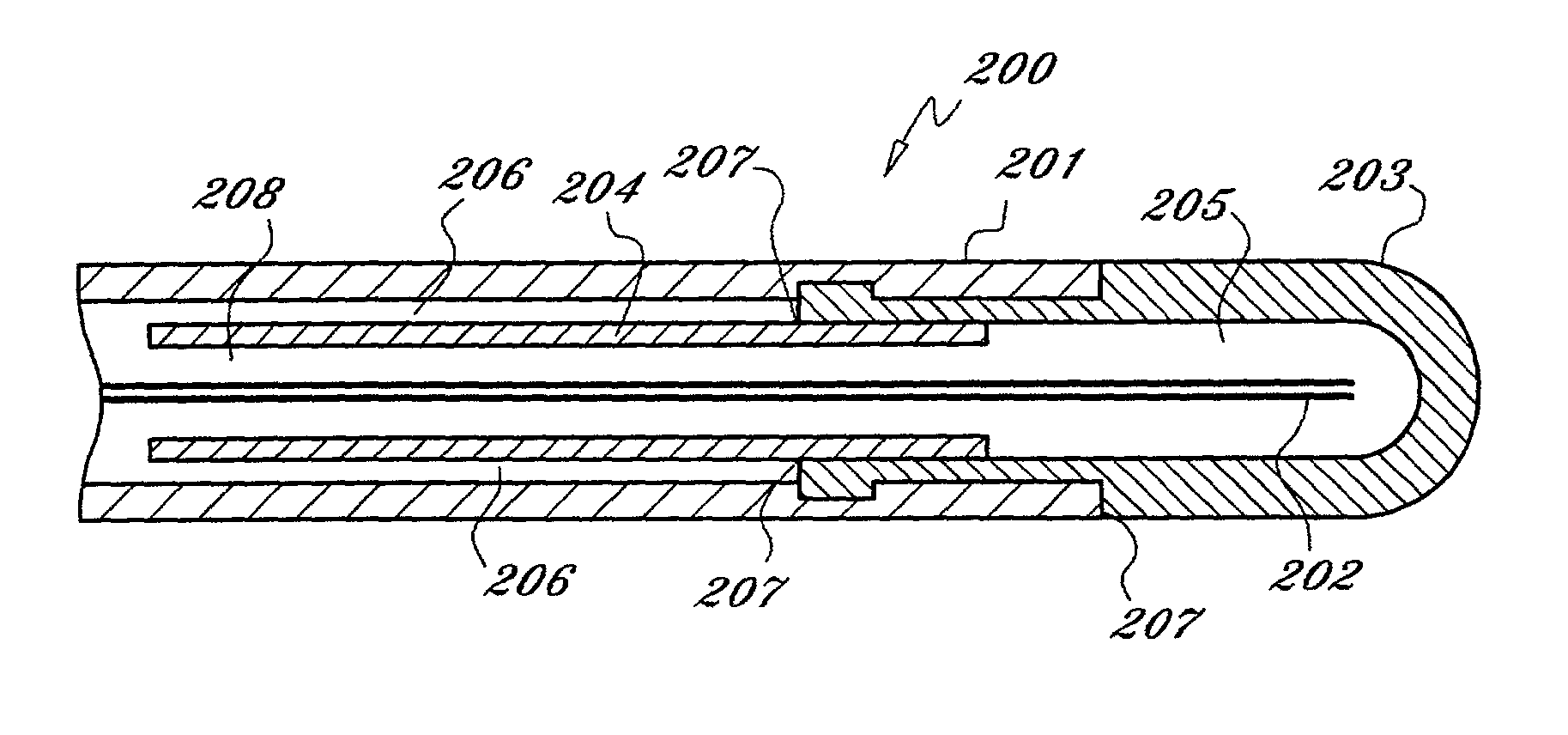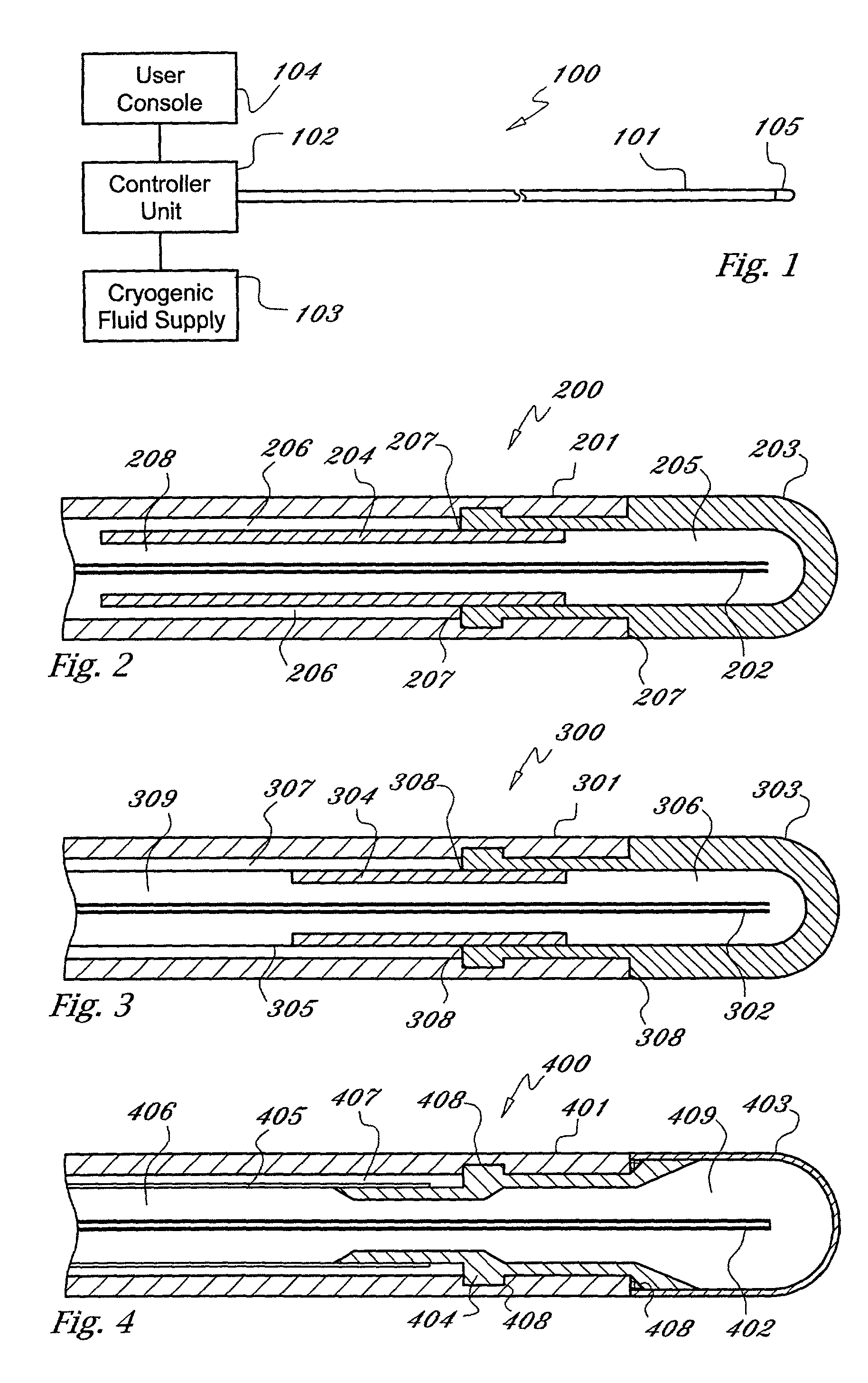Cryogenic medical device with high pressure resistance tip
a medical device and tip technology, applied in the field of medical devices, can solve the problems of significant degradation of the cooling power of the device, cryogen vapor, sublimation or precipitation, etc., and achieve the effect of reducing the pressure and high pressure resistance tip
- Summary
- Abstract
- Description
- Claims
- Application Information
AI Technical Summary
Benefits of technology
Problems solved by technology
Method used
Image
Examples
Embodiment Construction
[0022] As used herein, the term "cryogen" or "cryogenic fluid" refers to a fluid substance with properties suitable for: (i) steady flow through ducts of small diameter, (ii) high pressure compression into liquid phase, and (iii) evaporation and expansion to gas phase at low temperatures, typically at saturation temperature or in the range of -10 to -130 degrees centigrade The cryogen may be any suitable, relatively inert "working fluid", such as nitrogen, nitrous oxide, or carbon dioxide, or refrigerants such as chlorodifluoromethane, ethyl alcohol, or Freon (a trademark of DuPont), or any number of other refrigerants or fluids with a high thermal energy transfer capacity and low boiling point, as are commonly known to those skilled in the art.
[0023] As used herein, the term "tube" refers to an elongate duct or conduit suitable for conveying a fluid. The tube may comprise any number of elements or members, and may have a varying range of properties and dimensions, such as length, t...
PUM
 Login to View More
Login to View More Abstract
Description
Claims
Application Information
 Login to View More
Login to View More - R&D
- Intellectual Property
- Life Sciences
- Materials
- Tech Scout
- Unparalleled Data Quality
- Higher Quality Content
- 60% Fewer Hallucinations
Browse by: Latest US Patents, China's latest patents, Technical Efficacy Thesaurus, Application Domain, Technology Topic, Popular Technical Reports.
© 2025 PatSnap. All rights reserved.Legal|Privacy policy|Modern Slavery Act Transparency Statement|Sitemap|About US| Contact US: help@patsnap.com


